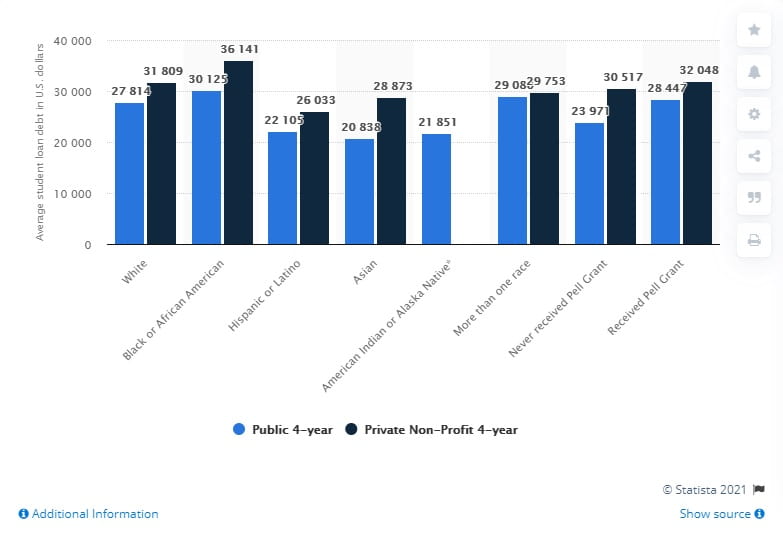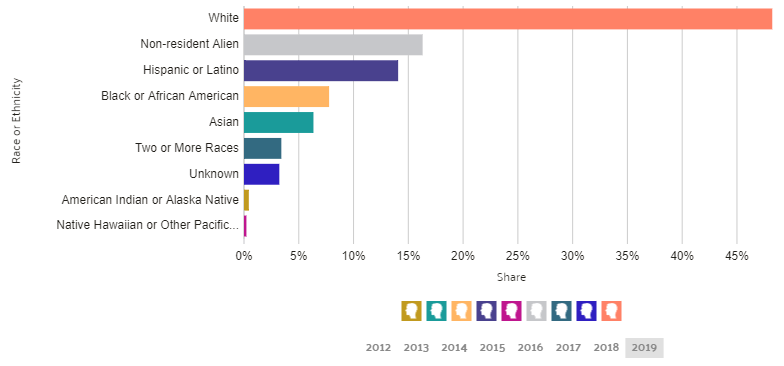
President Biden has recently proposed a $2 trillion plan to rebuild infrastructure and reshape the economy in a post-COVID-19 world. The plan includes rebuilding 20,000 miles of roads, repairs to 10 of the most critical and largest bridges in the country, the nationwide removal of lead pipes, and more. More importantly, Biden has called for racial equity to be at the forefront of the infrastructure plans to ensure that the plan includes historically disenfranchised communities, which are disproportionately Black, Indigenous, and people of color (BIPOC).
However, the urban/rural planning field is embedded with inequities that create more obstacles for planners of color to succeed, specifically for women of color. For Biden’s plan to work, the planning community needs to have an open and honest conversation about the lack of diversity in the field, the pay wage gaps, and most importantly, cultivate solutions to create more opportunities for non-white planners to succeed. As quoted countless times before, “nothing about us, without us.”
The most challenging part about the urban planning field is entering the profession itself. It has become an industry standard for entry-level planners to have their master’s of urban planning degree. As with many graduate degree programs, there are two ways that you can go with urban planning degrees- the policy path or building technical skills like mapping/coding/data analysis. To attend a top-ranked urban planning or urban policy program, a master’s degree can cost up to $94,000. Additionally, most graduate schools do not offer generous financial aid packages, which inhibits people’s ability to attend, especially with the national student debt crisis hitting $1.57 trillion and an average borrower with about $37,584 in debt. Additionally, the student loan debt crisis disproportionately impacts Black/African American and Hispanic/Latinx students the most.
 Image 1: Average U.S. students’ undergraduate student loan debt in 2016, by ethnicity (Source: Statista.com)
Image 1: Average U.S. students’ undergraduate student loan debt in 2016, by ethnicity (Source: Statista.com)
After going through the grueling admissions process, there are unrealistic expectations placed on students. At a minimum, students are expected to have summer internships at urban planning government agencies, nonprofits, or fields related to it. Even as graduate students, 43% of internships are unpaid. Students who come from high-income families can often depend on their relatives as financial safety nets to support them with living expenses to participate in unpaid internships- for lower-income students, it is financially infeasible for us to do so. Specifically for women of color, most of us are simultaneously our own safety net and contribute to our family’s finances. Thus, these standards inhibit graduate students of color from thriving, resulting in 1,316 urban planning degrees awarded to white people and only 384 degrees awarded to Hispanics/Latinxs, 212 degrees awarded to Black/African Americans, and so forth.
 Image 2: Race & Ethnicity by Degrees Awarded (Source: Data USA)
Image 2: Race & Ethnicity by Degrees Awarded (Source: Data USA)
The inability of low-income graduate students to participate in unpaid planning internships is often used as a way to discriminate against their candidacy for competitive planning jobs with their master’s degrees due to “lack of relevant experience.” In a sense, the industry standard and normalization of unpaid internships is inadvertently gatekeeping from low-income students– who are disproportionately BIPOC students– from urban planning jobs. It’s a double-edged sword; choosing a non-planning-related job opportunity that pays to sustain our livelihoods or to struggle financially throughout the unpaid opportunity.
Even with a master’s degree, the playing field still does not even out. Despite 61% of planners being women and 39% men, women planners make roughly $9,100 less for an average salary than men. With the existing pay wage gap among women of different races, the pay wage gap for women of color planners is most likely larger than their white women counterparts. Additionally, 75.9% of urban planners are white, and the second-largest demographic is Asians at 7.82%.
The stark racial and income inequities and industry requirements among planners do not allow for diverse planners to enter nor thrive in the planning field. With a great demand for infrastructure on the rise for a post-pandemic world, we need to address the inequities in planners’ cultivation. If we do not address the disparities in urban planning students’ higher education now, we will continue to have a majority white field. If white people overwhelmingly plan our cities, then planners missed the point of Biden’s infrastructure plan to center racial equity.
“Nothing about us, without us” includes uplifting and centering BIPOC planners; it means de-centering whiteness in all stages of planning. It means intentionally placing importance on lived experiences of community members and respecting community members’ time and effort by compensating them for their time with planners. For Biden’s plan to work, it requires allyship from our white planner colleagues from the most micro level to challenge their implicit biases and internalized racism. But most importantly, urban planning employers must give BIPOC candidates a chance for urban planning jobs with livable wages.
Cover Image Source: Reliance Foundry
WOW Sam this was a much-needed read. Thank you for dissecting this! Too many of these spaces are lacking BIPOC representation!! This feels like we’re moving in the right direction to hold the people who throw around the words “equality” and “representation” accountable.